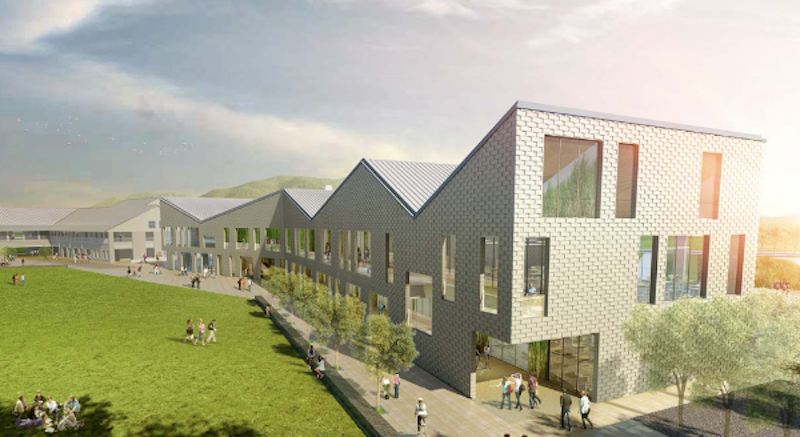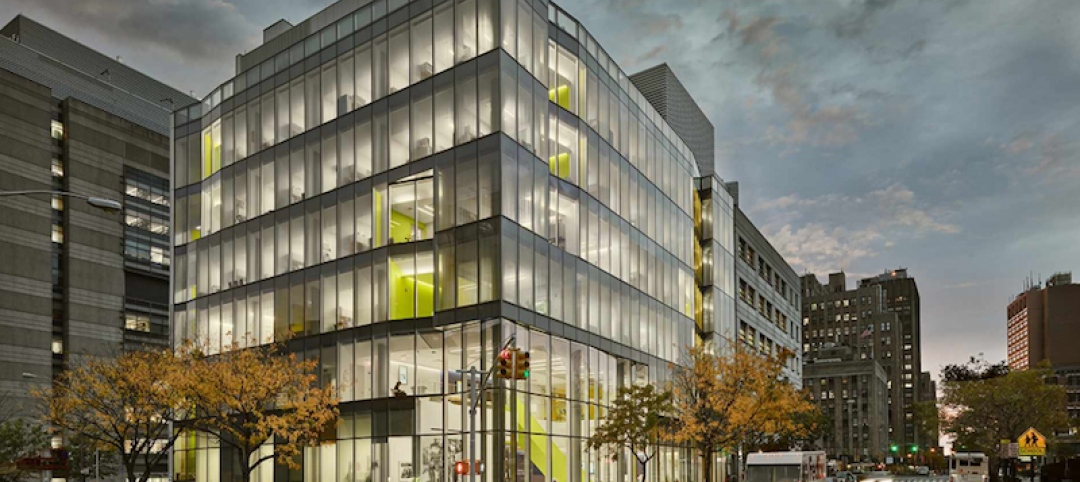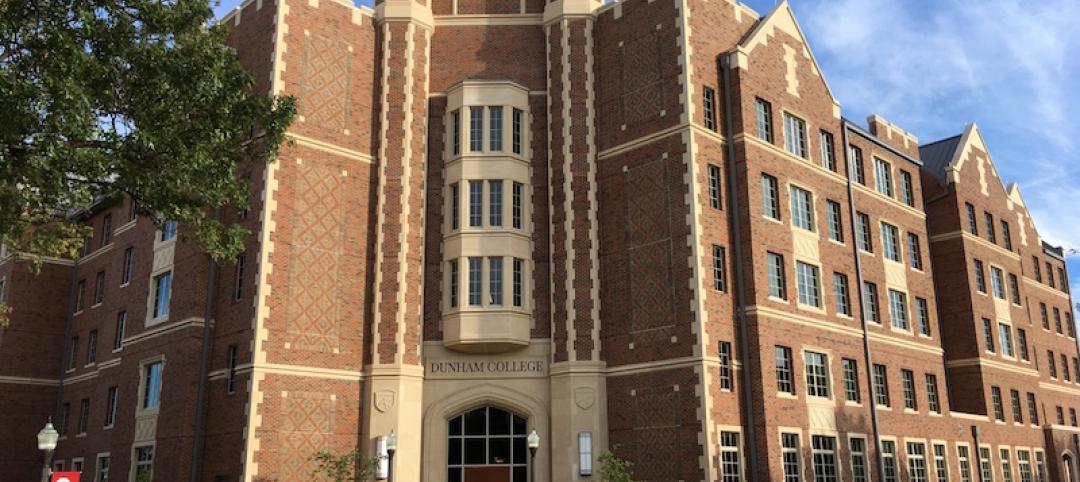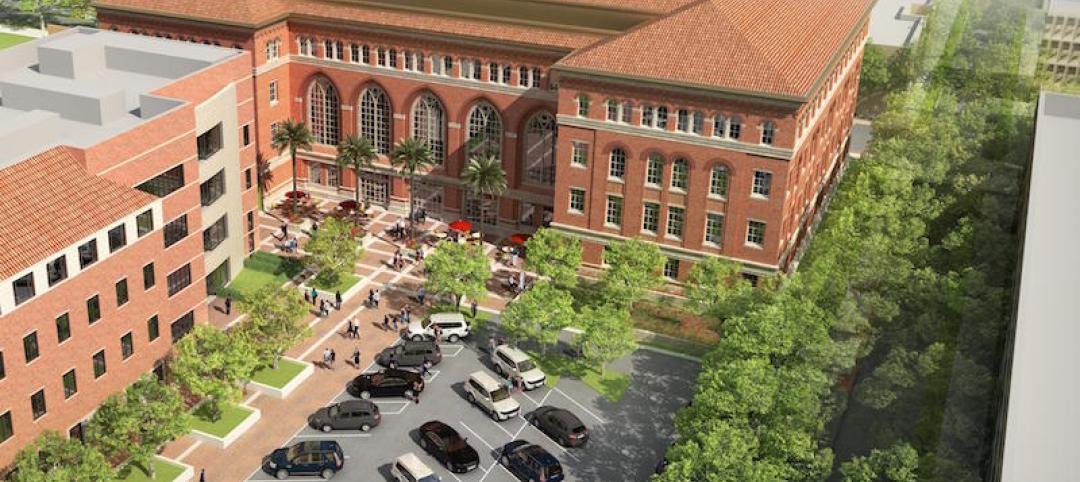The University of Hawaii West Oahu campus is nearing the completion of its newest building, the 43,000-sf Administration and Allied Health Building.
The new $36 million facility consolidates office space for campus leadership into a single location and also provides general purpose classrooms and wet/dry teaching laboratories for microbiology, cellular/molecular, anatomy/physiology, and organic chemistry.
Designed by Perkins+Will’s LA Studio in collaboration with KYA Design Group, the building design was inspired by the gable roof form of historic sugar mills common to the area. The building enclosure utilizes CMU (concrete masonry unit) as a monolithic skin with its texture and pattern inspired by traditional Hawaiian kapa (cloth).
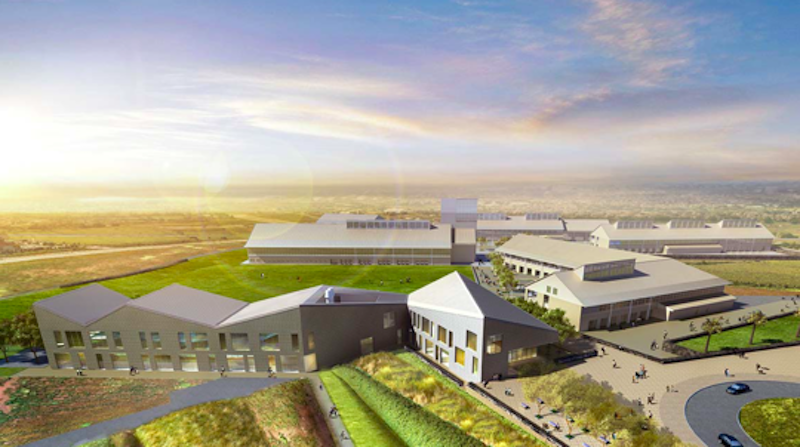 Courtesy of Perkins+Will's LA Studio.
Courtesy of Perkins+Will's LA Studio.
On the southern facade, deep, open-air lanais (balconies) connect the interior and outdoor circulation. The lanais act as a natural gathering space, an extension of the classroom, and are connected visually and physically to the Great Lawn.
“The challenge was how to best consolidate the distinct functions of teaching labs and classrooms within the same building as office space for the campus administration,” says Mark Tagawa, Associate Principal at Perkins+Will’s LA Studio, in a release. “We wanted to create a facility that interacted with the landscape in a sympathetic way, through water management, landscaping, and materiality. Cultural and ecological appropriateness was our filter for all design decisions.”
 Courtesy of Perkins+Will's LA Studio.
Courtesy of Perkins+Will's LA Studio.
The campus is located on former sugar cane land with a legacy of over 100 years of agriculture. Sustained tilling has left the topsoil depleted of organic matter, which decreases the ability to retain water and support new plant life. The project seeks to rectify this issue by restoring, healing, and rebuilding the topsoil via nitrogen fixing planting, implementing onsite ecological water and nutrient management, and regenerating and reviving native landscaping.
The Administration & Allied Health Building will open to students in spring 2019.
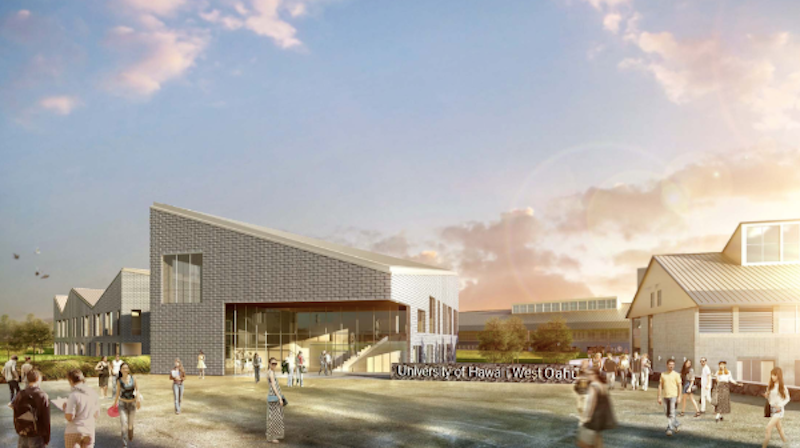 Courtesy of Perkins+Will's LA Studio.
Courtesy of Perkins+Will's LA Studio.
Related Stories
University Buildings | Nov 28, 2017
FXFOWLE and CO Architects collaborate on Columbia University School of Nursing building
The building has a ‘collaboration ribbon’ that runs throughout the building.
Sports and Recreational Facilities | Nov 27, 2017
The University of Memphis unveils the new home of the men’s basketball program
The Laurie-Walton Family Basketball Center will provide a strong commitment to donor and VIP cultivation.
Adaptive Reuse | Nov 10, 2017
Austin’s first indoor shopping mall becomes Austin Community College’s new digital media center
Renovation of the defunct mall represents Phase 2 of ACC’s $100 million adaptive reuse project.
University Buildings | Nov 6, 2017
A reconstructed building sets the standard for future rehabs at Cornell
Early AE collaboration played a major role in moving this project forward efficiently.
University Buildings | Oct 13, 2017
The University of Oklahoma receives its first residential colleges
The residential communities were designed by KWK Architects and combine living and learning amenities.
University Buildings | Oct 12, 2017
USC to debut new bioscience center next month
The building is designed to maximize recruitment and interaction of scientists and researchers.
University Buildings | Oct 12, 2017
The Center for Wounded Veterans is a first for a university campus
The Chez Family Foundation Center for Wounded Veterans in Higher Education is the first building of its kind on a U.S. college campus.
University Buildings | Oct 10, 2017
A 1920s cheese factory is now a university science building
Almost 15,000 sf of space was added to the original, four-story building.
Sustainability | Oct 9, 2017
New Arizona State University building will reach triple net-zero performance
The science and research complex will include an atrium biome filled with plants and water.
Higher Education | Sep 18, 2017
Campus landscape planning of the future: A University of Wisconsin-Madison case study
Recognizing that the future health of the campus and lake are interdependent, this innovative approach will achieve significant improvements in stormwater management and water quality within the university’s restored, more connected network of historic and culturally rich landscapes.


